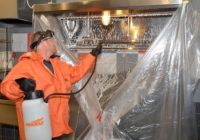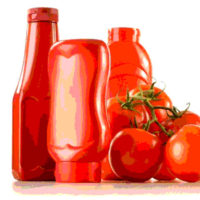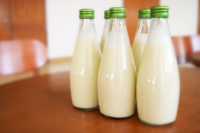Making Sure the Food Additive Ingredients you Receive are Safe
Your company has developed a new product line and you are in charge of making sure the food additives used are actually what they claim to be, with the level of quality desired, having no hidden contaminants and, of course, the price must continue to be at least reasonable if not inexpensive. Years ago, a project such as this was hard to accomplish and with the global market it is even more of a challenge.
You received a sample from the supplier, used in a lab or pilot plant production and found it works to the satisfaction of everyone. How do you now make sure that future food additive supplies continue to be equivalent to the sample?
There are actually several straightforward ways to achieve this. These involve facility auditing, product inspection and product testing. While some could be handled internally in your operation, others are probably better suited to an external expert.
Facility Auditing
The purpose of a facility audit is to assure the supplier’s operation uses the right processes and procedures to produce the food additive at an acceptable level of quality and safety. In the days when a company could visit and audit all the facilities producing the food additive being purchased, and assuming your personnel or you knew the correct auditing techniques, it enabled you to verify the supplier’s operation, personnel and their capabilities. You could see at first-hand how everything was being done, or at least on the day you or your associates were there. Unfortunately, with a global market this is no longer realistic.
So what kind of audit should be selected and which audit company should perform the audit? Selecting a certified Global Food Safety Initiative (GFSI) audit, International Organization for Standardization audits or an audit company’s own audit may all be good choices, but there is a cost/benefit ratio for the company to consider. However, deciding the kind of audit and which audit company to select, while important, is actually not as essential as knowing how to interpret the results of an audit.
While the overall score and the fact the supplier passes the audit is important, knowing what non-conformances are listed and corrective actions undertaken by the supplier are vital. Make sure that any non-conformances do not impact the quality and safety of the food additive. Some examples of non-conformance that impact safety are obvious ones, such as having rodents or insects in the facility, lacking a quality and safety program or Sanitation Standard Operation Procedures. Others are less obvious, such as having uncontrolled water in a dry facility, a Hazard Analysis and Critical Control Point (HACCP) plan’s CCP is really just a CP, and the scientific validation of the HACCP plan listed for the operation is dissimilar to the system (e.g., a barbecue sauce pasteurization validation used for a nut pasteurization operation).
Make sure that any non-conformance has been (if major or critical), or will be corrected (if minor) and that the corrective actions taken will assure no recurrences of the non-conformance in future. If this is not the first audit of the operation, make sure that previous non-conformances are not repeated, because any repetition means former corrective actions were either incorrect or incorrectly implemented.
 Product Inspections
Product Inspections
Various inspections can be performed. Some have to be done at the food additive facility, but others can be done elsewhere. The most important is probably the final random inspection. After an additive is 80 percent to 100 percent produced, it is inspected by a sampling program and compared to a specification with mainly sensory, physical and some simple chemical parameters. If the additive is 100 percent produced, then it can be sampled and inspected at either the food additive manufacturing facility or at the finished goods manufacturing facility. However, it is always recommended to be performed at the food additive manufacturing facility, because this saves a lot of money in transportation fees should something be found wrong with the food additive. Additionally, if a third party performs the inspection at the food additive manufacturing facility, they can select samples for further testing and ship these in a secure manner to a laboratory while they then watch the inspected product as it is loaded into a transport container, to ensure that what shipped is what was inspected.
Product Testing
Once the facility has been audited and the food additive has been inspected, the product requires testing to make sure that it really is what it is supposed to be, that the purity is as it should be, it complies to the regulations, specifications and standards and that there are no hidden contaminants of a biological, radiological or chemical nature.
All food additives should be tested to assure that the additive is what it purports to be and assayed to determine the purity of the food additive. For some additives it is simple and for other additives it is complicated. There are many sources and standards that indentify the methods of how to achieve these two tests. For example, some sources are the Food Chemicals Codex, U. S. Pharmacopeia National Formulary and Codex Alimentarius. Yes, including Codex Alimentarius, because not all food additives are single chemical ingredients and food additives can be foods in their own right. Other sources are regulatory websites that provide information from regulations, import alerts, recalls, warnings and product associations such as the California Almond Board or the American Spice Trade Association.
Food additives can be contaminated by many different microorganisms, as simple as yeast, mold and mycotoxins, as well as more dangerous ones such as Escherichia coli O157H:7, Listeria monocytogenes and Salmonella, just to a name a few. Food additives can also be unintentionally contaminated with heavy metals, cleaning chemicals, sanitizers and radioactive isotopes or they could be intentionally contaminated with all sorts of chemicals, such as sweeteners, melamine, sulfites, allergenic processing aids, veterinary drugs, pesticides and illegal or undeclared legal colorants.
 Let us take a look at a couple of ingredients. Citric acid is sold in anhydrous or hydrous forms, so immediately the product has to be checked for its water or moisture content. It is sold as colorless, translucent crystals or as white granular or fine crystalline powder, so the color and granulation must be checked. It is odorless and has a strong acidic flavor, so the fragrance and flavor need to be evaluated. The citric acid identity must be confirmed and an assay of purity performed. There are more checks that need to be made, such as for heavy metals, and more specifically arsenic, and residue on ignition.
Let us take a look at a couple of ingredients. Citric acid is sold in anhydrous or hydrous forms, so immediately the product has to be checked for its water or moisture content. It is sold as colorless, translucent crystals or as white granular or fine crystalline powder, so the color and granulation must be checked. It is odorless and has a strong acidic flavor, so the fragrance and flavor need to be evaluated. The citric acid identity must be confirmed and an assay of purity performed. There are more checks that need to be made, such as for heavy metals, and more specifically arsenic, and residue on ignition.
Honey is an ingredient that is complicated. Once again, as with all food additives the sensory and physical parameters, such as color, flavor, texture, water and solids must be evaluated. Honey can have complications of sweetener adulteration that can only be assessed by carbon isotope testing. There is a long list of potential adulterations by veterinary drugs, such as chloramphenicol, tetracyclines and sulfonamides, just to name a few. Heavy metal contamination is a problem in honey and so metals must also be checked for. There are concerns about pollens in honey from genetically modified plants and so this may need to be tested for by polymerase chain reaction, but sometimes no pollen is found, because some firms have taken to ultra-filtrating the honey.
I have only mentioned a few of the tests that need to be done on these two ingredients. The most important factor is to know your suppliers and know where your food additives are coming from. Make sure that they are audited on an annual basis at the least and that you receive a copy of the full report, including any corrective actions to the non-conformances. Inspect all materials that are going to be shipped to you or inspect them upon receipt. Perform tests for all possible contaminants in the food additive. Rate your suppliers based on the audits, inspections and testing and develop a program, whereby consistently good suppliers are rewarded with less inspection and testing and the suppliers that you have issues with will require more audits, inspections and testing, but remember that all suppliers and food additives must be audited, inspected and tested to assure safety and quality of the materials. Mistakes happen in the best of operations.
James Cook has been working with SGS since 2009 handling food and food contact technical issues for the Consumer Testing Services group. Jim has more than 25 years quality assurance and technical experience in the food retailing, manufacturing and private brand brokerage business. For more information visit www.foodsafety.sgs.com.
Looking for a reprint of this article?
From high-res PDFs to custom plaques, order your copy today!





